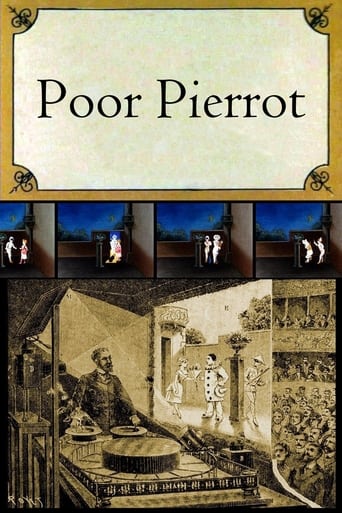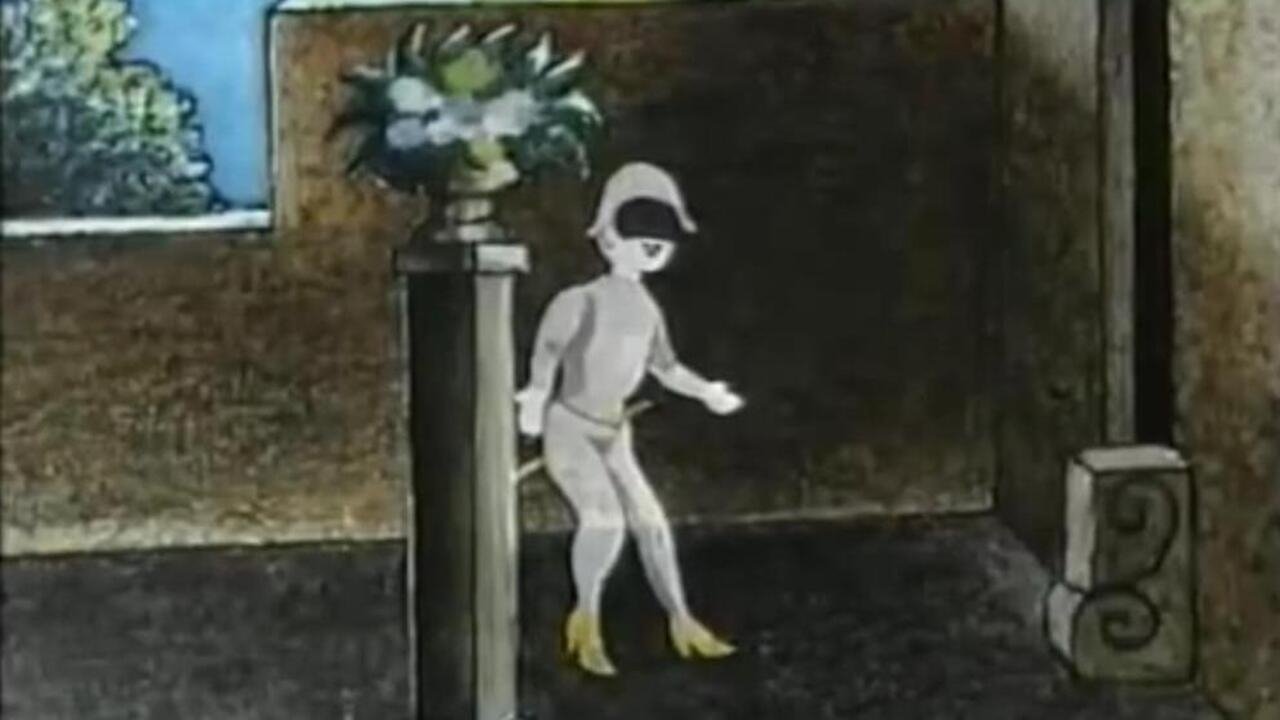des-47
It's cheating a little to list this as a film as strictly speaking it's not one, though its maker Émile Reynaud pushed pre-cinema technology as far as it could go to achieve an experience practically indistinguishable from that of watching a theatrical presentation of an animated cartoon film. His Théâtre Optique featured his Praxinoscope, a radical development of old-established animation toys like the Zoetrope. This used rotating faceted mirrors and lenses that could project a succession of hand-drawn images from a paper strip with sprocket holes, allowing much longer sequences of continuous action than the short loops hitherto used in such devices. These images were then superimposed on a static background projected from a conventional magic lantern slide, prefiguring later cel animation techniques in which the image is broken down into a succession of layers with the minimum of movement in each one. The exhibition was completed with live narration and music.Some of Reynaud's original elements survive (others he later threw in the Seine) and their affinity with film is demonstrated by the ease with which they can be reconstructed on modern film or video. Pauvre Pierrot was the first such production and is among the most charming, a simple tale featuring the traditional characters Pierrot, Arlequin and Colombine acting out their ancient love triangle. Some reconstructions replicate the translucent, slightly ghostly quality the characters would have had at the time. Sadly Reynaud's work was overtaken by the arrival of the cinema proper and he died a poor and unhappy man.
Eric Branan
Charles Emile Reynaud is often given little credit for his pioneering of the Animation genre. For Shame! The first animated film to be projected, "Pauvre Pierrot" (In English, "Poor Pete"), is a simple, yet important classic, in the fact that not only is it the first animated film ever made, it is also one of the first films in history to have an actual story featured in it.The plot, while simple, is noted because it can actually relate to modern times. Pete, the main character, is obviously in love with Colombine, an evidently pretty girl. He brings her flowers and even sings for her. However, her current lover, Arlequin, isn't too keen to that idea. He deviously scares Pete away, taking his drink as well. It was true even back then: Nice guys never get the girl.While it may only be five minutes, "Pauvre Pierrot" is a timeless classic, and should be given much more credit, along with it's amazing creator, Charles Emile Reynaud.
ackstasis
J. Stuart Blackton's 'Humorous Phases of Funny Faces (1906)' is generally held as the first animated film. Indeed, it was the first animated film made on motion-picture film, but such history is nevertheless unfair to Émile Reynaud, who, fourteen years earlier, was projecting moving animated images to delighted audiences. 'Pauvre Pierrot (1892)' is one of the director's few surviving works (most were, in a fit of frustration, discarded into the Seine by the director himself), and such a colourful and charming curio remains a delight to behold.Reynaud animated each frame himself – 500 in total (36 metres long) – and extended the film to 12-15 minutes by personally manipulating the picture-bands during the projection. The story told is a simple one: Pierrot and Arlequin compete for the romantic attention of Colombine, a beautiful maiden. One potential suitor attempts to charm the good lady with a lute performance, but his competitor goes one better with a baton or sword of some sort.Reynaud's moving picture show, billed as "Théâtre Optique" or "Pantomimes Lumineuses," included a triple-bill of three films: 'Pauvre Pierrot,' 'Un bon bock (1892),' and 'Le Clown et ses chiens (1892).' One contemporary newspaper reported that Reynaud "creates characters with expressions and movements so perfect that they give the complete illusion of life." The show was initially a great success, but, in 1918, Reynaud died a poor man. His delicate work, prone to rapid degradation, could not compete with the Lumière brothers' cinematograph, which depicted real-life, and not merely an animated approximation.
F Gwynplaine MacIntyre
Charles-Émile Reynaud deserves credit as the inventor of the animated cartoon. Unfortunately, he was a poor businessman, and his artistic innovations outstripped the technical hardware which he invented to exhibit them. Reynaud died penniless in a Val-de-Marne hospice. A few years before he died, embittered, he took most of his animated films -- too deteriorated to be restored yet again -- and flung them off Pont Saint-Michel into the Seine. I am reluctant to describe any movie as 'lost' unless it was deliberately destroyed, since many early films which some expert described as 'lost forever' have returned from the dead. Sadly, it does appear that the most of the cartoons drawn and produced by Reynaud -- each running 15 minutes or less -- are, indeed, lost.Reynaud's first innovation was to adapt the zoetrope -- basically a toy -- into the more sophisticated praxinoscope. This placed a series of drawings on the inside of a cylinder, with a mirror at the centre. As the cylinder revolved, an onlooker -- viewing the mirror through a slit -- would see the drawings as a continuous moving image, courtesy of the same optical illusion (persistence of vision) now exploited by modern films. But the length of the 'story' told by a praxinoscope was limited to the number of images which could be displayed within the cylinder's finite diameter. Usually, a praxinoscope's drawings depicted a single event happening over and over (with each circuit of the cylinder).Reynaud's next innovation was to devise a much longer filmstrip, which -- with sprocket holes -- could be fed into and out of the praxinoscope so as to display a much longer sequence of images. A dedicated artist, Reynaud painted his drawings in bright elaborate colours, and affixed them to the transparent filmstrip via a flexible clear gelatin. Unfortunately, Reynaud's technical innovations did not allow for the permanence of his art. As the gelatin aged, it hardened and cracked while turning opaque. The heat of his projection lamp corrupted the delicate colours of his images. The sprocket holes tore easily. The very act of projecting his filmstrips contributed to their destruction. This seems to have been the single greatest reason for Reynaud's commercial failure: the tremendous amount of labour, time and money expended on creating one of his filmstrips could not be recouped in the very small number of projections (for paying audiences) which it would sustain before deteriorating.'Poor Pierrot', running slightly less than 15 minutes, is a fairly conventional harlequinade. In a garden lit by a crescent moon, the rivals Pierrot and Harlequin vie for the love of the fair Columbine. Harlequin has a baton, which he uses to frighten Pierrot and chase him away. End of story.The great appeal of Reynaud's films was in their novelty (which nowadays can only be estimated) and their visual beauty (for which we have little surviving evidence) rather than in their (necessarily) extremely simple stories. Consequently, I shan't hazard a guess as to a quantified rating of his films' worthiness. Instead of rating 'Poor Pierrot' on a scale of one to 10, I'll lament the deterioration of Reynaud's films and his final embittered act of destroying most of their surviving remnants. Better grease up the time machine, set it for 1910, and rescue those strips which Reynaud threw from the Saint Michel Bridge.


 AD
AD

